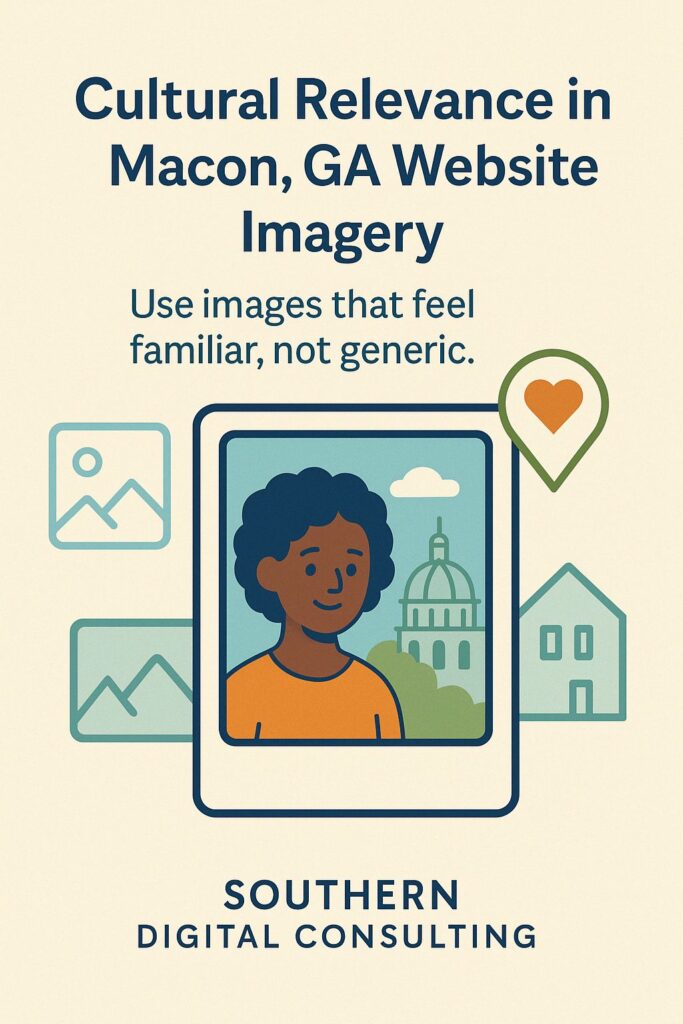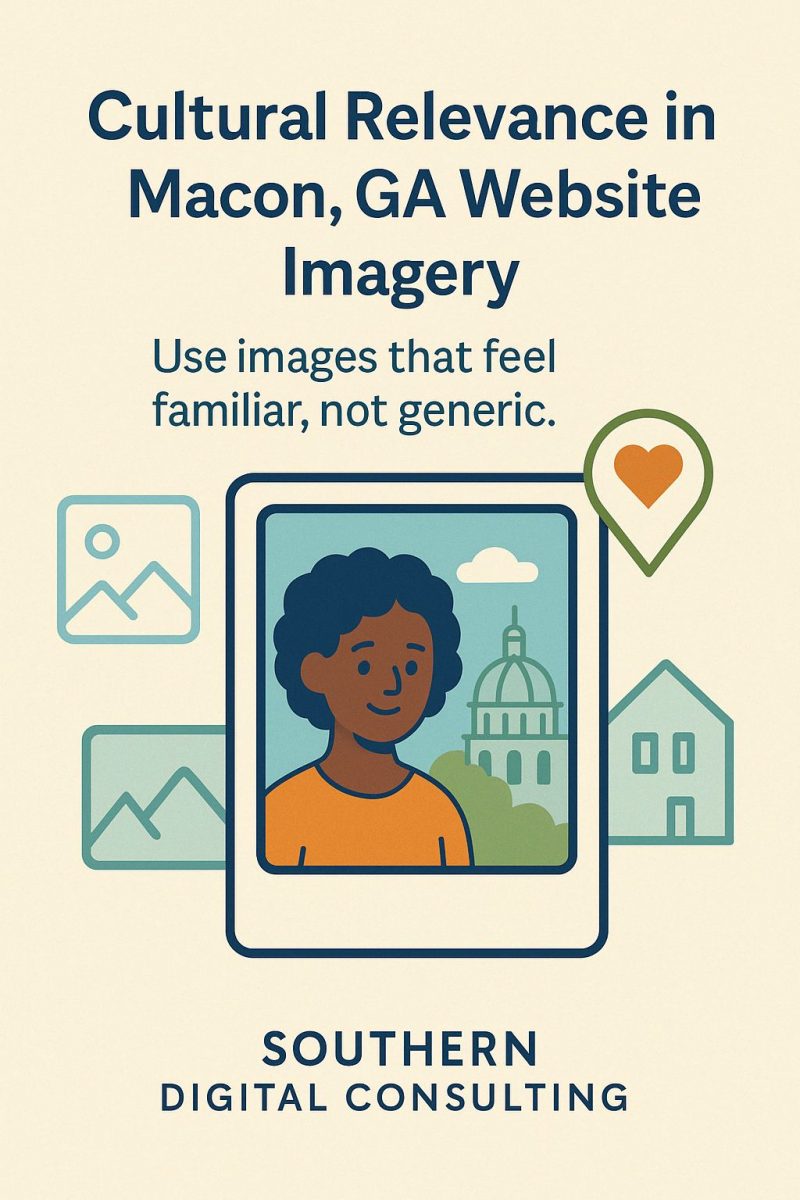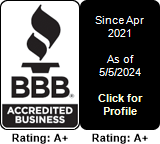You can have the best copy, smoothest layout, and fastest load times. But if your visuals feel fake, users notice. And they leave. In a place like Macon, where community still carries weight and people know what “real” looks like, stock images can create a quiet disconnection. Website imagery isn’t just about filling space. It’s about trust, tone, and familiarity. The photos you use either invite someone into a shared story or remind them they’re looking at something built far away. This cluster breaks down how Macon businesses can use imagery to reflect who they actually are, who they serve, and where they belong.
Why Localized Visuals Perform Better Than Stock in Macon
There’s a reason stock photos feel empty. They weren’t taken for you. They weren’t shot in your office, on your street, or during a real interaction. And for users in Macon, that disconnect shows up instantly. Local customers aren’t looking for polish. They’re looking for proof.
Localized visuals outperform stock because they create recognition. A shot of Cherry Street lit up at dusk. A handshake in front of a red-brick building that looks like half the businesses on Riverside Drive. A real client in a real moment. These aren’t just photos. They’re cultural signals. And in a town where people drive by your storefront before they ever click “Schedule Now,” those signals carry weight.
Stock imagery tends to feel wide, with generic smiles, unplaceable office settings, and models wearing perfect clothes while laughing at nothing. These images don’t speak Macon. They speak global. And that works for global brands, but not for a local CPA, dental practice, or HVAC service.
Users respond to what feels familiar. Show your actual team. Real clients (with permission). Your logo in context, not floating on a white background. Even imperfect shots—someone standing slightly off-center or a bit of motion blur—often outperform the cleanest stock when the subject is local, recognizable, and grounded.
The goal isn’t perfection. It’s presence. Show up in your visuals like you show up in your service: real, local, and confidently imperfect.
How to Source Authentic Imagery for Macon-Based Sites
You don’t need a full production crew to create great local imagery. What you need is intention and a little creativity.
Start with your environment. That waiting room you redid last year? Photograph it. Your storefront with seasonal signage? Capture that too. Take pictures of places your customers will actually walk into. It builds instant trust.
Use your phone if you have to. Today’s iPhones and Androids shoot well enough for web. The key isn’t megapixels. It’s composition and light. Shoot during golden hour if you can. Let natural light do the work. Avoid harsh midday sun or yellow overheads.
When it comes to people, be specific. Instead of employee-at-desk shots, photograph your staff interacting. Show them greeting a client, explaining a process, fixing something with care. Ask real customers if they’d be comfortable being featured. Offer a small discount or a thank-you gift card.
If you hire a photographer, make sure they understand Macon. Not just visually, but rhythmically. You want someone who knows the look of the town, the mood of the community, and the kinds of stories your competitors are telling.
Stay away from over-editing. Color grading that flattens skin tones or filters that blur authenticity will only make you look generic again.
Organize your photos by story: Our team, Our process, Our space, Our clients. Build a gallery you can reuse across your site—home, about, contact, blog headers. Authentic imagery doesn’t just improve UX. It becomes part of your identity.
Avoiding Stereotypes in Georgia-Centric Web Photography
It’s easy to fall into the trap of regional storytelling by leaning on clichés: peach orchards, porch swings, BBQ. While those visuals might feel regionally familiar, they can also feel tired—especially to the people who actually live here.
Stereotypical imagery in Georgia web design tends to flatten the diversity of the state’s people and places. It assumes every Macon user looks or thinks the same way. That is a shortcut that undermines credibility.
The better approach is to reflect the real mix. Young entrepreneurs and older residents. Teachers, builders, service workers, students. A business site shouldn’t just nod toward the culture. It should live inside it. Think real downtown architecture, active street life, seasonal festivals. People in all kinds of clothes, moods, and professions.
Be careful with racial representation too. If your team is diverse, show it naturally. If it isn’t, don’t tokenize with stock images that misrepresent. It’s better to be honest and human than aspirational and inauthentic.
Don’t over-romanticize rural Georgia either. A small-town business can still feel modern, sharp, and efficient. If your photos only say quaint, they might be selling the wrong message.
Avoid outdated gender roles in service images. Show women leading. Men listening. Mix it up. Let your photography invite a wider range of people into your brand, not exclude by accident.
Authenticity doesn’t mean abandoning identity. It means telling the truth beautifully, without falling back on shortcuts that feel more like branding for tourists than connection with neighbors.
Building Emotional Connection Through Local Design Elements
Images don’t just fill space. They shape memory. And memory, in a town like Macon, is personal. If your visuals don’t spark some kind of recognition, you’re leaving something powerful on the table.
Start with the emotional tone you want to create. Trust? Use photos of eye contact, warm lighting, open body language. Excitement? Show motion, movement, collaboration, or before/after transformations.
Then localize. A photo of a team meeting is fine. A photo of that same meeting with a window that shows a downtown Macon mural changes the emotional impact entirely.
Emotional connection comes through micro-details. A flyer on the wall that mentions a local charity. A sign that says “Closed for Bragg Jam.” These details do more than ground your image—they build shared experience.
Use color intentionally. Warmer tones suggest friendliness. Cooler ones suggest professionalism. But if you’ve got a real photo with real energy, sometimes the color doesn’t even need adjusting.
Keep in mind that emotional connection isn’t always happy. It can be safe, clear, understood, or respected. A website for a legal firm might feature serious, quiet images—no smiles, just dignity. That connects just as well.
Pair visuals with copy that matches the tone. A smiling photo with a serious line of text feels disjointed. But when both image and message land on the same frequency, that’s when people feel seen, not sold to.
And that is when they stay.
Visual Storytelling That Speaks to Middle Georgia Identity
Visual storytelling isn’t about explaining. It’s about evoking. A well-placed photo can do what three paragraphs can’t. It can say, “This place understands me.”
Middle Georgia isn’t one thing. It’s barbecue and biotech. It’s Friday football and Sunday brunch. It’s quiet roads and growing industries. Your visuals should reflect that blend of rootedness and change.
Show families, but not just nuclear ones. Show business owners, but not just men in suits. Include architecture, but not just antebellum homes. Let your images reflect the whole shape of the region, not just the polished postcard version.
Use sequence, not just single shots. A homepage hero image followed by a behind-the-scenes shot, then a testimonial with a customer on their porch. That’s a visual arc. It tells a story without needing explanation.
Tie into real events when you can. A vendor booth at the Mulberry Street Festival. A table setup during Bragg Jam. These tell users, “We’re not just here. We show up.”
Let contrast do some of the storytelling. A modern workspace inside an older Macon building. A startup team alongside a retired couple getting support. That kind of juxtaposition reflects the true rhythm of the region.
Great visual storytelling doesn’t have to be dramatic. It just has to feel real, layered, and local.
Want Imagery That Feels Like It Belongs Here?
We help Macon businesses create and curate visuals that reflect the culture, people, and places they serve. Not stock photos that feel like someone else’s story. If you’re ready to build trust through images that hit home, visit locally inspired web imagery for Macon businesses and let’s show your audience what real looks like.



